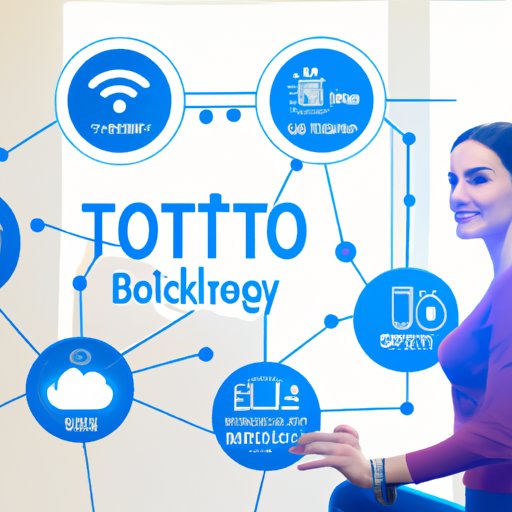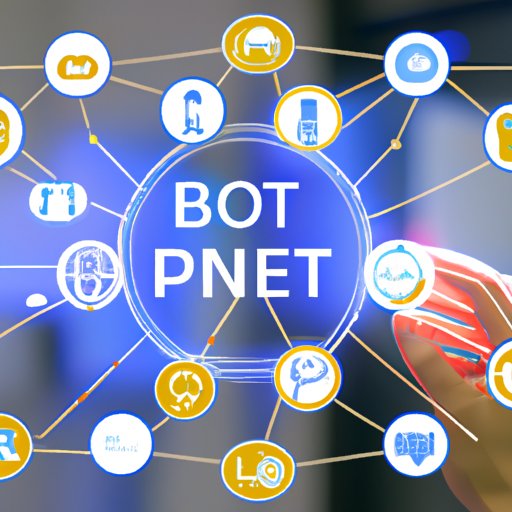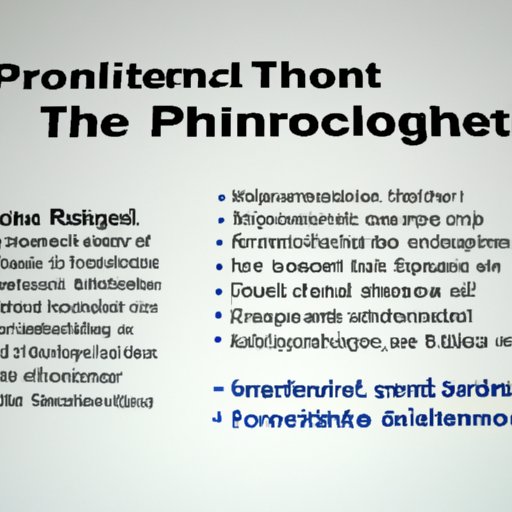Introduction
The Internet of Things (IoT) is a rapidly growing technology that has been transforming the way we live and work. It refers to the network of physical objects—devices, vehicles, buildings, and other items embedded with electronics, software, sensors, and connectivity—which enables them to collect and exchange data. The potential of IoT technology is immense, from automating everyday tasks to collecting and analyzing data for businesses.
A Beginner’s Guide to IoT Technology
To understand how IoT technology works, it’s important to first get familiar with some of its key components.
What is IoT?
Put simply, the Internet of Things (IoT) is a network of connected objects that can collect and exchange data. It includes everything from smartphones and tablets to home appliances, medical devices, and industrial equipment. By connecting these objects to the internet, they can be monitored and controlled remotely. This allows us to automate everyday tasks and improve efficiency in both our personal and professional lives.
How Does It Work?
At the heart of IoT technology is its ability to connect physical objects to the internet. This is made possible by a combination of hardware, software, and communication networks. IoT devices are equipped with sensors, which enable them to detect changes in their environment and send data back to the cloud. This data is then analyzed and used to trigger automated responses, such as turning off lights when no one is in the room or sending out notifications when an appliance needs maintenance.
Examples of IoT Devices
IoT technology is being used to create a range of smart devices, from fitness trackers and smart thermostats to connected cars and medical devices. Some of the most popular IoT devices include:
- Smart lighting systems
- Smart speakers and virtual assistants
- Smart security systems
- Connected watches and wearables
- Connected refrigerators and kitchen appliances
- Robotic vacuums
- Smart locks and doorbells

Exploring the Potential of IoT Technology in Everyday Life
IoT technology is changing the way we interact with our environment. From automating mundane tasks to improving safety and security, here are some of the ways it’s being used in everyday life.
Smart Home Automation
One of the most popular applications of IoT technology is home automation. Smart home devices allow users to control and monitor their home from anywhere in the world. This could include setting up automated routines, such as turning off lights at a certain time or adjusting the temperature in response to weather conditions. It also allows users to keep an eye on their home while away, with features like motion sensors and night vision cameras.
Wearable Technology
Wearable technology is becoming increasingly popular, with devices like fitness trackers and smartwatches allowing users to monitor their health and activity levels. In addition to tracking steps and heart rate, many devices can also give users real-time feedback on their performance and sleep patterns, as well as providing reminders to stay active.
Connected Cars
The automotive industry is also embracing IoT technology, with connected cars offering features like remote start, navigation assistance, and real-time diagnostics. This allows drivers to stay informed about their car’s performance, as well as providing added convenience and peace of mind.

Analyzing the Impact of IoT Technology on Businesses
IoT technology is having a major impact on business operations, from automating processes to collecting and analyzing data. Here are some of the ways it’s being used to streamline operations and improve efficiency.
Automation and Efficiency
One of the major benefits of IoT technology is its ability to automate routine tasks. This can help reduce costs and improve efficiency, as well as freeing up employees to focus on more complex tasks. For example, IoT sensors can be used to monitor inventory levels and automatically order new stock when needed.
Data Collection and Analytics
IoT devices can also be used to collect vast amounts of data, which can then be analyzed to gain valuable insights into customer behavior and product performance. This data can be used to make informed decisions, as well as helping businesses identify areas for improvement.
Machine Learning and AI
In addition to data collection, IoT technology is also enabling businesses to leverage machine learning and artificial intelligence (AI). This can be used to automate complex tasks, such as recognizing patterns in customer data or predicting future trends.
Examining the Security Challenges of IoT Technology
Despite its many benefits, IoT technology also poses significant security risks. As IoT devices become increasingly interconnected, they become vulnerable to cyber-attacks. Here are some of the security challenges associated with IoT technology.
Security Vulnerabilities
As IoT devices become increasingly interconnected, they become vulnerable to cyber-attacks. Many IoT devices lack basic security features, making them easy targets for malicious actors. This can lead to data breaches, identity theft, and other security threats.
Need for Authentication
To protect against cyber-attacks, it’s essential for IoT devices to have strong authentication protocols in place. This should include two-factor authentication, as well as using secure passwords and encryption technologies.
How IoT Technology is Changing Communication
IoT technology is also having a major impact on communication, from interconnecting devices to improving networking capabilities. Here are some of the ways it’s revolutionizing communication.
Interconnectivity Between Devices
IoT technology allows devices to communicate with each other, creating a seamless experience for users. This could include devices like smartphones, tablets, and computers all working together to provide a unified experience.
Improved Networking Capabilities
IoT technology also allows for improved networking capabilities, with faster transfer speeds and increased bandwidth. This makes it easier for devices to communicate with each other, as well as allowing users to access data more quickly.

Understanding the Ethical Implications of IoT Technology
While IoT technology offers numerous benefits, it also raises important ethical questions. Here are some of the ethical implications of IoT technology.
Privacy Concerns
IoT technology gives organizations access to large amounts of data, which can be used to identify individuals and track their behavior. This raises serious privacy concerns, with users often unaware of how their data is being used and who has access to it.
Impact on Employment
Another ethical concern surrounding IoT technology is its potential to replace human labor. Automation enabled by IoT technology could result in job losses, as machines take over tasks that were previously done by humans. This could have a major impact on employment, particularly in industries where manual labor is still prevalent.
Conclusion
IoT technology is revolutionizing the way we live and work, offering numerous benefits from automation and efficiency to improved networking capabilities. However, there are also some serious security and ethical considerations to be aware of. Ultimately, the potential of IoT technology is immense, and it will continue to shape the way we interact with our environment in the years to come.
(Note: Is this article not meeting your expectations? Do you have knowledge or insights to share? Unlock new opportunities and expand your reach by joining our authors team. Click Registration to join us and share your expertise with our readers.)
